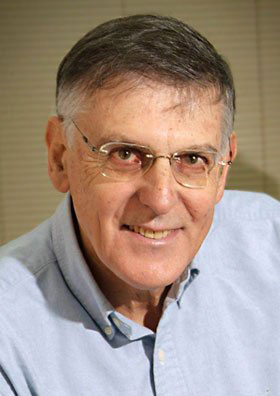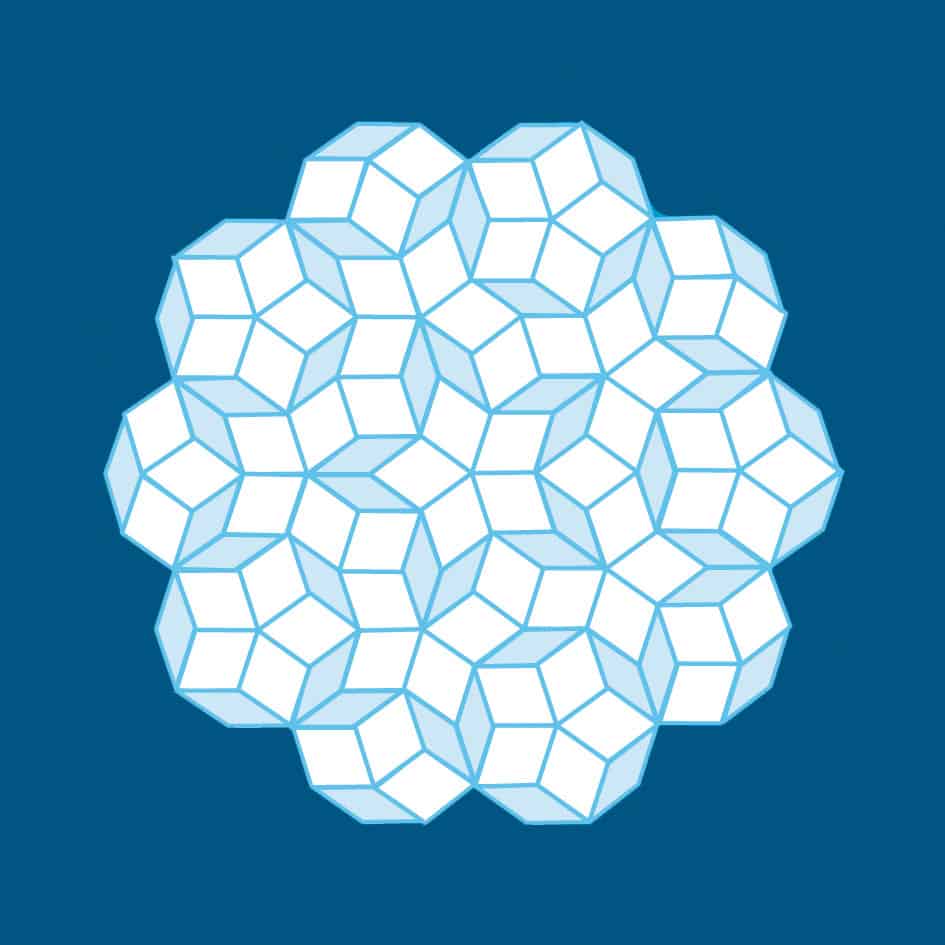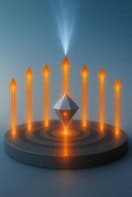
The 2011 Nobel Prize for Chemistry has been awarded to Dan Shechtman from Technion – Israel institute of Technology for his discovery of quasicrystals – materials that have ordered but not periodic structures. Shechtman’s discovery, which he made in 1984 while studying a sample of aluminium manganese, generated huge excitement, confusion and significant opposition. The Journal of Applied Physics, for example, rejected Shechtman’s original paper detailing the discovery on the grounds that it would not interest the physicists who read the journal. Linus Pauling – a giant of 20th-century crystallography – also dismissed the findings.
Before Shechtman’s discovery, most researchers thought that long-range order in physical systems was impossible without periodicity. Atoms were believed to be packed inside crystals in symmetrical patterns that were repeated periodically over and over again – and that this repetition was required to obtain a crystal. However, Shechtman found that the atoms in his crystal were packed in a pattern that could not be repeated and yet had “10-fold” rotational symmetry.
A system is said to possess n-fold rotational symmetry if it looks the same after it has been rotated through 360/n degrees, which meant that Shechtman’s sample was unchanged after being rotated through 36 degrees. Before his discovery, a periodic system was only supposed to have either 1-, 2-, 3-, 4- or 6-fold rotational symmetry, with anything else forbidden by the laws of crystallography.
Since Shechtman’s breakthrough, however, hundreds of different quasicrystals have been found, including icosahedral quasicrystals that have 2-fold, 3-fold and 5-fold rotational symmetry. There are also octagonal (8-fold), decagonal (10-fold) and dodecagonal (12-fold) quasicrystals that exhibit “forbidden” rotational symmetries within 2D atomic layers but that are periodic in the direction perpendicular to these layers.
In awarding the prize, the Royal Swedish Academy of Sciences says in a statement that Shechtman “had to fight a fierce battle against established science” to have his finding accepted as “the configuration found in quasicrystals was considered impossible”. It adds that this year’s Nobel prize has “fundamentally altered how chemists conceive of solid matter”.
Order from disorder
Shechtman announced his controversial discovery while on sabbatical in the US at the National Bureau of Standards in Washington, DC, where he was investigating the properties of mixtures of metals that had been melted together and rapidly cooled. Opposition to his finding was fierce, with Pauling, for example, suggesting that the observed diffraction pattern was caused by five crystals rotated by 72 degrees relative to one other, rather than being caused by just one crystal with 10-fold symmetry.
But these early doubts were soon swept away by new experimental evidence, and Shechtman’s paper – which was finally published in Physical Review Letters in November 1984 – has since become one of the most-cited research articles in the scientific literature.
Indeed, quasicrystals have led to important discoveries in disciplines as diverse as nanoscience and supramolecular chemistry. Photonic “metamaterials” based on quasicrystals may one day even replace semiconductor devices to make all-optical circuits for communication and information technologies, while quasiperiodic arrays of electronic spins could reveal new aspects of magnetism for spintronics applications.
The “right decision”
Before Shechtman’s discovery, mathematicians were well aware that some functions had the property of being “almost periodic” and that the mathematical basis of this “aperiodicity” had been outlined in 1933 by Harald Bohr (the brother of Niels Bohr). Indeed, quasiperiodic functions are a subset of the family of almost-periodic functions, with the most famous quasiperiodic pattern being Penrose tiling, which was discovered by Roger Penrose of Oxford University in 1974. Penrose tiling is not periodic, since sliding an exact copy of the pattern around will never produce an exact match.
Physicist Rónán McGrath from the University of Liverpool in the UK, who has studied quasicrystals for the last 12 years, says Shechtman’s award is “well deserved” and the right decision, even though the term “quasicrystal” was actually coined by the theorists Paul Steinhardt and Dov Levine at the University of Pennsylvania in the US. “Shechtman persisted in believing what he had was genuine,” says McGrath. “He managed to convince the community that he was correct all along. It is right that Shechtman alone is awarded.”
Renee Diehl from Penn State University in the US agrees that the prize is well deserved. “Shechtman was very astute to recognize that he had discovered a new form of crystalline matter,” he says. “This discovery completely changed how we think of crystalline matter and even necessitated a new definition for the term ‘crystal’.”
Born in 1941 in Tel Aviv, Shechtman graduated from the Technion in 1966 with a degree in mechanical engineering and then completed a PhD in materials engineering at the institute in 1972. After a postdoc in the US at the Aerospace Research Laboratories, Ohio, he returned to the Technion in 1975 where he has worked ever since. He was also awarded the Wolf Prize for Physics in 1999.




